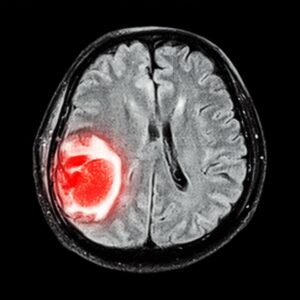
Navigating the Path to Recovery: Your Comprehensive Post-Stroke Guide
A stroke can be a life-altering event, but with proper care and understanding, recovery is not only possible but can lead to significant improvements in quality of life. This guide breaks down the key aspects of post-stroke management, providing valuable insights for patients and caregivers alike.
Understanding Brain Swelling: The First Hurdle
In the aftermath of a stroke, one of the immediate challenges is managing brain swelling, medically known as “ischemic brain edema.”
Imagine your brain as a sponge that’s been soaked in water – it swells up, pressing against the rigid skull. This pressure can cause additional damage if not properly managed.
How it’s treated:
- Medications called osmotic diuretics to reduce swelling
- Careful fluid management
- In severe cases, surgical intervention to relieve pressure
What to expect: Your medical team will closely monitor your neurological status, looking for any signs that the swelling is increasing or causing complications.
Restoring Blood Flow: A Delicate Balancing Act
Reperfusion – the restoration of blood flow to affected areas – is crucial for minimizing damage. However, it’s not as simple as just “turning the tap back on.”
The challenge: When blood rushes back into oxygen-starved tissues, it can cause what’s known as “reperfusion injury.” This is like watering a dry plant too quickly – the sudden influx can cause damage.
The solution:
- Controlled reperfusion, gradually restoring blood flow
- Medications to protect brain cells from oxidative stress
- Anti-inflammatory drugs to manage the body’s response
Surgical Interventions: When Necessary
In some cases, surgery may be required to remove blood clots, repair damaged blood vessels, or relieve pressure on the brain. While these procedures can be life-saving, they come with their own set of risks.
Potential complications:
- Infection
- Bleeding
- Adverse reactions to anesthesia
Prevention strategies:
- Strictly follow all pre- and post-operative instructions
- Inform your medical team about all medications and supplements you’re taking
- Be vigilant about post-operative care, including wound care and follow-up appointments
Nursing Care: Your Daily Support System
Nurses are the unsung heroes of stroke recovery, providing round-the-clock care and monitoring. Their role is crucial in preventing complications and supporting your journey to recovery.
Key aspects of nursing care:
- Regular monitoring of vital signs and neurological status
- Administering medications and managing pain
- Preventing complications like pressure ulcers and infections
- Providing emotional support and education to patients and families
Physiotherapy: Rebuilding Your Abilities
Physical therapy is a cornerstone of stroke recovery, helping you regain mobility and independence. It’s not just about regaining strength; it’s about retraining your brain to control your body effectively.
What to expect in physiotherapy:
- Early mobilization: Getting you moving as soon as it’s safe, even if it’s just sitting up in bed
- Balance training: Progressing from supported standing to independent walking
- Strength exercises: Targeting muscles weakened by the stroke
- Functional training: Practicing everyday activities like dressing or using utensils
Remember: Consistency is key. Your therapist will likely give you exercises to practice between sessions. Regular practice can significantly speed up your recovery.
Breathing and Swallowing: Overcoming Key Challenges
Stroke can affect the muscles involved in breathing and swallowing, making these seemingly simple actions challenging.
Common issues:
- Dysphagia (difficulty swallowing)
- Weak cough reflex
- Sleep apnea
Management strategies:
- The recovery position: Lying on your side with your top leg bent can help prevent choking and make breathing easier
- Swallowing assessment: A speech therapist will evaluate your ability to eat and drink safely
- Breathing exercises: To strengthen respiratory muscles and improve lung capacity
- In some cases, temporary use of feeding tubes or breathing support may be necessary
Nutrition: Fueling Your Recovery
Proper nutrition is crucial for healing and recovery, but eating can be challenging after a stroke.
Common nutritional issues:
- Difficulty swallowing
- Decreased appetite
- Altered taste or smell
Nutritional management strategies:
- Modified diets: Pureed foods or thickened liquids may be recommended
- Nutritional supplements: To ensure you’re getting adequate vitamins and minerals
- Feeding tubes: In some cases, temporary feeding tubes might be necessary
Work with a dietitian: They can help create a nutrition plan that meets your needs while taking into account any swallowing difficulties.
Ongoing Rehabilitation: The Road to Recovery
Rehabilitation is not a short-term process; it often continues long after you’ve left the hospital. The goal is to help you regain as much independence as possible and adapt to any lasting changes.
Key components of post-stroke rehabilitation:
- Physiotherapy: Continues to work on mobility, strength, and coordination
- Occupational therapy: Focuses on daily living skills like dressing and cooking
- Speech and language therapy: Addresses communication difficulties and swallowing problems
- Cognitive rehabilitation: Helps with memory, attention, and problem-solving skills
- Psychological support: Addresses the emotional impact of stroke
The rehabilitation process:
- Assessment: Your team will evaluate your abilities and set goals with you
- Treatment: Regular therapy sessions, often several times a week
- Home program: Exercises and activities to practice between formal sessions
- Regular reassessment: Goals are adjusted as you progress
- Adaptive equipment: Introduction to tools that can help maintain independence
- Community reintegration: Gradually returning to community activities with support
Recent Posts


The Importance of Early Stroke Detection in World Stroke Day 2024

Pediatric Brain Injury: Prevention and Care During the ABC Years

Love Your Spine,Live Your Life: A World Spine Day Detailed Guide to Painless Future!

Brain Tumor Awareness: What People Must Know for Early Detection
Have Any Questions?
Please contact clinic number to know about doctor’s availability & Appointments
- +91-6369870503
- 0427-4517636